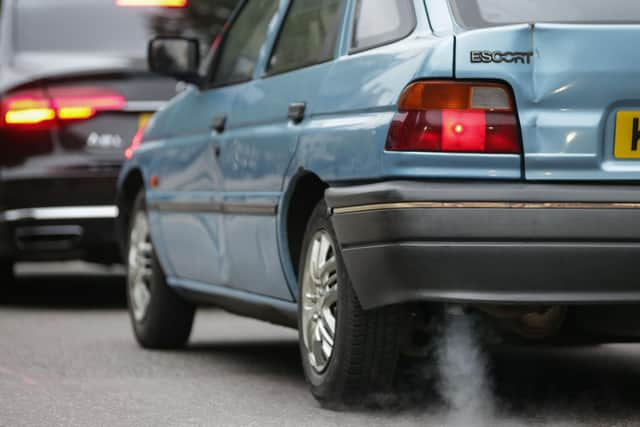Traffic set to be restricted around St Thomas More school in Bedford as part of School Street scheme
and live on Freeview channel 276
A second School Street scheme is to be put in place following the success of a trial at a Bedford school to restrict motorised traffic at school drop-off and pick-up times, a meeting heard.
The Green Travel Plans for Schools report discussed at Bedford Borough Council’s recent Climate Change Committee meeting (October 4) said that following the “success” of the School Street at Cauldwell School (launched in May), a further trial will begin at St. Thomas More School early in the new school term.
Advertisement
Hide AdAdvertisement
Hide AdA School Street is a road outside a school with a temporary restriction on motorised traffic at school drop-off and pick-up times. The restriction applies to school traffic and through traffic.


The report said that the result is a safer, healthier and pleasant environment for everyone.
It also highlighted that across the UK, roads around schools have become “plagued” with a surge of traffic concentrated over a 50-minute period at drop off and pick up times.
Adding that school run related traffic accounts for a quarter of cars on the road. This increases the risks of collisions with vulnerable road users, as well as unlawful parking and traffic congestion.
Advertisement
Hide AdAdvertisement
Hide AdThe trial at Cauldwell has reportedly seen an increase in people walking and cycling to the school and an improvement in local air quality.
Councillor Stephen Moon (Conservative, Great Barford Ward) asked what the approach would be for secondary schools. “They have a much more challenging catchment,” he said. “While the majority of primary schools are very localised.”
Matthew D’Archambaud, chief officer, Highways, Transport & Engineering replied, “It's about looking at a suite of measures dependent on the age profile.
“It can be more challenging, but if we can embed sustainable transport choices to primary or lower school children, hopefully this will filter through to when they do start to attend secondary school.
Advertisement
Hide AdAdvertisement
Hide Ad“So they do think about cycling, taking the bus or other alternatives to being driven to school.”
Councillor Doug McMurdo (Independent, Sharnbrook Ward) wondered how this information could be given to academy schools and those with a catchment area that goes outside of Bedford Borough.
D’Archambaud said, “It’s about giving people the benefits of their children travelling sustainably, be it from a health and wellbeing point of view, or from an air quality point of view.
“It's also about reaching out to the schools proactively to give that information as to why it is a sensible thing to do.”
Advertisement
Hide AdAdvertisement
Hide AdA wider programme of school streets trials is being investigated, based on individual sites potential feasibility and available funding.
Department of Transport statistics from 2018, show that 14 per cent of children killed on Great Britain’s roads were between the morning school run (7-9am) and 23 per cent after school between 3-5pm.